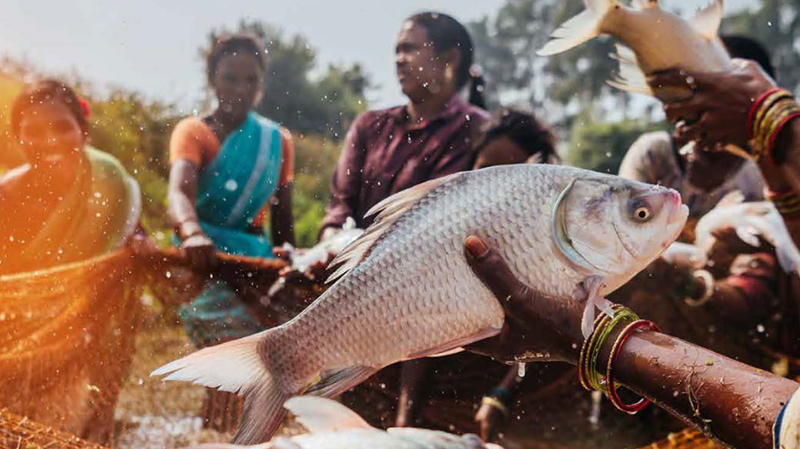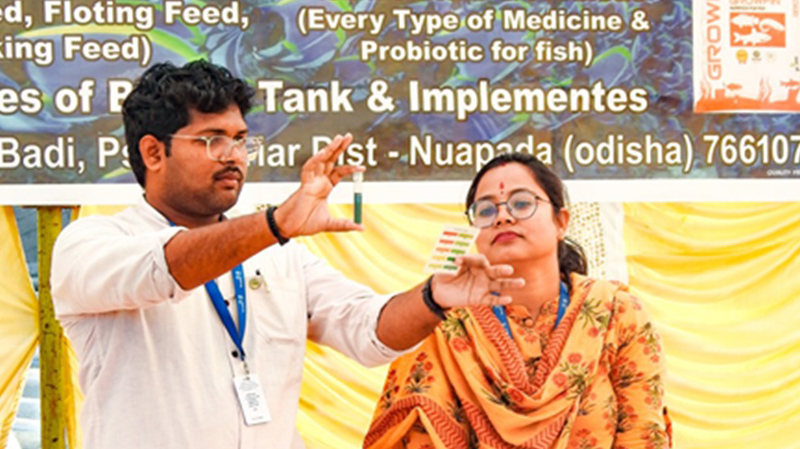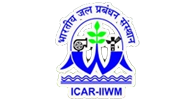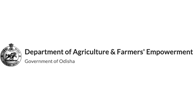The Odisha Integrated Irrigation Project for Climate Resilient Agriculture (OIIPCRA) has significantly advanced the fisheries sector by introducing climate-smart technologies, improving self-sufficiency, and enhancing livelihoods under the aquaculture sub-component. The following key interventions demonstrate OIIPCRA’s impact on Odisha’s aquaculture landscape.
Contributions of OIIPCRA :
1. Early Breeding Technology for Year-Round Seed Availability
- Challenge : Seasonal fish seed shortages necessitated imports from other states, leading to increased costs and supply disruptions.
- Intervention : Climate-smart early breeding technology was introduced in 28 hatcheries, with 100% financial assistance under OIIPCRA (2021-22).
- Results :
- Off-season production of >94 crore spawns, generating ₹94 lakh in revenue (2021-22).
- Adoption expanded to 54 private and 4 government hatcheries, producing 247.48 crore spawns annually (2022-23).
- Impact : Odisha is now self-sufficient in seed production, reducing dependence on external sources.
2. Scientific Fish Farming in Minor Irrigation Projects (MIPs)
- Challenge : Underutilization of MIP water resources and lack of livelihood opportunities for women’s groups.
- Intervention : Promotion of scientific fish farming among WSHGs, WUGs, and Pani Panchayats, with ₹1.5 lakh per hectare financial assistance (2021-25).
- Results :
- Expansion from 45.33 ha (2021-22) to 850+ ha (2024-25) across 183 MIPs.
- Productivity increased from 720 kg/ha to 1,200 kg/ha.
- 493 tonnes of fish produced, generating ₹6 crore revenue.
- Impact : Women-led aquaculture has strengthened livelihoods, improved resource efficiency, and promoted climate-resilient farming.
3. Freshwater Prawn Nursery Demonstration
- Challenge : Limited availability of juvenile freshwater prawns for grow-out ponds.
- Intervention : Establishment of freshwater prawn nurseries with ₹5 lakh per hectare financial support (2023-25).
- Results :
- 20.4 hectares developed, benefiting 74 farmers.
- 4,605 kg of prawns produced, generating ₹14-15 lakh revenue.
- Impact : Diversified income sources, enhanced prawn availability, and improved aquaculture profitability.


4. Rice-Cum-Fish Culture for Sustainable Farming
- Challenge : Low farm income from traditional rice farming.
- Intervention : Introduction of integrated rice-fish farming with ₹5.13 lakh per hectare assistance (2024-25).
- Results :
- Farmers earned an additional ₹62,000/ha without affecting rice yields.
- 3.6 ha brought under rice-fish culture.
- Impact : Improved farm income, sustainable resource utilization, and ecological benefits through reduced chemical dependency.
5. Expansion of Finfish Hatcheries for Mola Production
- Challenge : Limited hatchery production of small indigenous species (SIS) like mola.
- Intervention : Establishment of four mola hatcheries with ₹4 lakh per unit assistance (2024-25).
- Results :
- Additional income of ₹96,000 per hatchery from mola seed production.
- 400 tonnes of mola produced, enhancing nutritional security.
- Impact : Increased availability of nutrient-rich fish strengthened rural aquaculture, and climate-resilient production practices.

Conclusion
OIIPCRA’s interventions under Aquaculture sub-Component have significantly enhanced aquaculture productivity, self-sufficiency, and economic resilience in Odisha. By integrating climate-smart technologies, empowering women, and promoting sustainable resource utilization, the project has strengthened rural livelihoods and ensured long-term fisheries sector growth.













